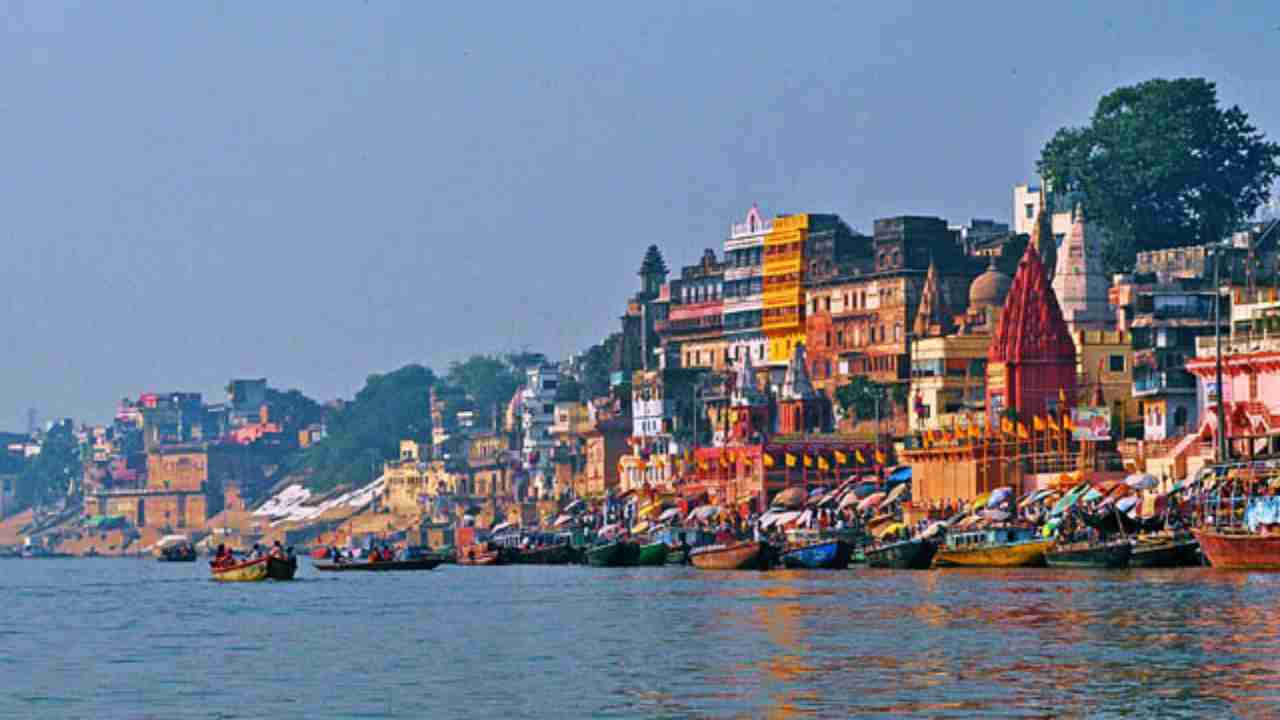A grand Hindu festival, Ganga Dussehra is celebrated on the banks of River Ganges. The day is celebrated to mark the arrival of river Gange on the Earth. Before descending on the Earth, Ganges was residing in the stoup of Lord Brahma. Hence, she has the purity of heaven. After descending on the Earth, the purity of heaven came along with her.
Ganga Dussehra is celebrated on the tenth day of the third month of the Hindu calendar. This year the festival will be celebrated from May 31- June 2.
Amongst the array of festivals that commemorate the gods and goddesses of Varanasi, Ganga Dussehra holds a special place in the hearts of the local community. Ganga is, for all practical and religious purposes, the lifeline of Varanasi. So, when, once a year, a festival commemorates the river, it is celebrated with much enthusiasm.
With the spread of life taking coronavirus in the country, the grand celebration on this occasion is canceled and the Varanasi ghats remained deserted. However, it may be noted that the reopening of religious places has been permitted with effect from June 8.
Each year, the famous Ganges festival happens here in Varanasi to pay tribute to the river that gives life. This festival lasts for 5 days.
There are over 85 ghats in Varanasi that stretch from one end of the old city to the other. Wide concrete steps descend into the river and on these steps, the magic unfolds. Devotees arrive in the wee hours of the morning to take a dip in the holy river and then pray to the Goddess Ganga. The temples along the ghats are rife with activity as devotees flock to the city to pay homage to the goddess. It is said, that on this day Suryavanshi king, King Bhagirath, managed to convince Ganga to flow from heaven on earth.
Ganga Dussehra 2020: Timings, significance, celebrations and importance of number 10
On this occasion we brought to you some little known facts about the river Ganga:
The higher dissolved oxygen content of Ganga
An Indian environmental engineer, D.S. Bhargava after three years of thorough study of Ganga concluded that Ganga can reduce its biochemical oxygen demand level much faster than other rivers. Bhargava says, organic materials usually exhaust a river’s available oxygen and starts putrefying. But in the Ganges, an unknown substance acts on organic materials and bacteria and kills them. He further adds Ganga’s self-purifying quality leads to oxygen levels 25 times higher than any other river in the world.
Dhaka is on the banks of Ganga
Dhaka (Dacca), the capital of Bangladesh, stands on the Buriganga (“Old Ganges”), a tributary of the Dhaleswari. Apart from the Hugli and the Meghna, the other distributary streams that form the Ganges delta are, in West Bengal, the Jalangi River and, in Bangladesh, the Matabhanga, Bhairab, Kabadak, Garai-Madhumati, and Arial Khan rivers.
Ganga is shifting
In Bihar, some parts of the river have shifted more than 2.5 km since 1990. Due to this trend, a sizeable number of the urban populace now finds it difficult to trek long distances and prefer to perform Chhath Puja rituals at makeshift water bodies like ponds or lakes or remain confined to their rooftops.
Unexplained sounds in Ganges Delta
Mistpouffers or Barisal Guns are unexplained sounds that resemble a sonic boom that has been reported in many waterfront communities worldwide. In India especially, they have been heard in the delta regions of Ganga and Brahmaputra. While they resemble the sonic boom of a supersonic jet, what’s even mysterious is the fact that they have been reported from times before any airplanes were invented. T.D. LaTouche, a British officer wrote about these puzzling sounds in his journal in the 1890s.
Anti-putrefaction properties of Ganga
Anti-putrefaction Properties of Ganga was the reason East India Company ships only used water from the Ganges for drinking purposes on their 3-month long voyage back to England because it stayed “sweet and fresh.” In a study conducted by Malaria Research Center in New Delhi it was observed that water from upper ambits of Ganga did not host mosquito breeding, and also prevented mosquito breeding in any water it was added to.
Water Shortages in Ganga
At present, Ganga is looming under severe water crisis. Around Varanasi, the river once had an average depth of 60 meters, but in some places, it is now only 10 metes. Gangotri glacier has been receding at an alarming rate due to a smog-generated climate change over the mountains, but experts argue poor water resource management, dumping of industrial waste, sewerage, and overpopulation are to be blamed. Not only does this pose a risk of environmental disaster, but also of a spiritual crisis.


















